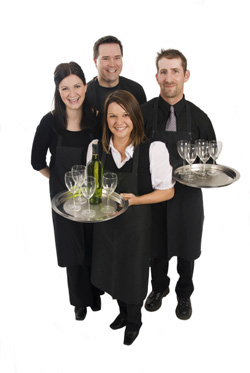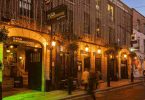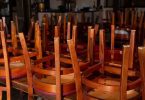Our per capita wine consumption — among lowest in Europe
The Irish Wine Association published its long-awaited industry factsheet recently. Drinks Indsutry Ireland takes a look at wine’s performance over the past 12 months.
2009 proved a another “challenging” year for the wine industry here with total wine sales falling again from 8.4 million nine litre cases to 7.6 million, a fall of 9.5 per cent, according to the 2009 Irish Wine Market report from the Irish Wine Association. 2008‘s wine sales were themselves down 4.1 per cent from the 8.7 million case figure in 2007.
Last year, the difficulties the market faced were unprecedented and resulted in substantial job losses across every sector of the trade, reports the IWA.
Table wine sales fell 8.6 per cent from 8.0 million cases to 7.3 million cases and according to the report, “The 2008 Budget saw the wine industry singled out for a 20 per cent excise duty increase which contributed significantly to a 10 per cent decline in volume sales during 2009. In particular sales of better quality wines declined by a much higher rate”.
According to Philip Robinson, Chairman of the Irish Wine Association, “The Annual Industry Review outlines that 2009 was one of the most challenging years for wine sales in recent memory”. He put the 10 per cent decline down to the cumulative impact of the 50 cent excise increase on a bottle of wine introduced in October 2008, the hemorrhaging of wine sales through cross-border shopping and the historically weak economy.
This also resulted in wine losing share in the alcoholic beverage market as a whole in 2009. Where wine was responsible for 22.7 per cent of the total alcohol market in 2007, it accounted for only 17.6 per cent of retail sales in 2009 (as opposed to 53.2 per cent for beer, 21.6 per cent for spirits and 5.6 per cent for cider).
However wine has consolidated its position considerably compared to nearly 10 years ago when wine had but a 12 per cent market share against 60 per cent for beer and 24 per cent for spirits.
And 2009 ended on good news with last December’s Budget excise reduction. This benefited the domestic wine market leading to a 3.8 per cent increase in sales in the year-to-date, according to Philip Robinson, who nevertheless emphasised that this had followed a disastrous 2009 when the overall market declined by 10 per cent.
The small increase in wine sales in response to the excise cut is attributable to a decline in cross-border shopping that was losing significant revenue to Northern Ireland throughout 2008 and 2009, he said, warning that the overall market remains challenging as a consequence of the economic downturn, lower consumer spending and declining tourism.
Accordingly, Philip Robinson called on the Government to consider a further reduction in excise in the upcoming Budget 2011 in order to boost the wider drinks industry.
The IWA put total consumer spend on alcohol in 2009 at €6.5 billion (or 7.6 per cent of total consumption expenditure), down seven per cent from the previous year.
“In the build-up to Budget 2011 the IWA will work with Government on identifying ways to assist the Irish wine market to help support sales and competitiveness in this important sector, including addressing our high levels of taxation that sees wine sold in Ireland subject to some of the highest taxes in the European Union.”
This excise generated €242 million for the Exchequer in receipts in 2009, according to the IWA report which added, “This is equivalent to 25 per cent of the total alcohol excise collected. Irish excise duties on sparkling wine continue to be the highest in the EU. Compared with 20 years ago the market, pricing structure and profile of sparkling wine mean it is no longer seen as a luxury product; despite this there still endures an excise
regime which is double that of still wine”.
The IWA Review found that females predominate the wine market accounting for 57 per cent of consumers. Red table wine remains the most popular with Irish consumers at 50 per cent, while white wine and rose constitute 45 per cent and five per cent respectively. Sales of sparkling wine and champagne have declined slightly from 2.8 per cent to 2.6 per cent of the wine market.
The off-trade is responsible for 77 per cent of wine sales but the majority of these sales are dominated by the multiples which have a market share of 50 per cent, up five per cent on the previous year. This increase in market share has had a direct effect on the independent off-licence sector, the next-largest retail sector at 26 per cent, with symbol groups now accounting for 17 per cent and discounters’ share rising to seven per cent.
At 15.4 litres per capita consumption of wine in 2009 was down 9.4 per cent on the previous year and is one of the lowest in Europe. The previous year, 2008, only Sweden, Norway, Slovakia, Iceland, Malta and the US ranked below Ireland for per capita consumption (worldwide).
Australian and Chilean wines remain Ireland’s most popular country of origin and these two continue to dominate the Irish wine market with 25.5 per cent and 22.4 per cent of the market respectively. France retains its position as the third most popular source of wine with 12.9 per cent of the market followed by the US at 11.9 per cent, South Africa at 7.4 per cent, Spain at 6.9 per cent and Italy at 5.4 per cent. Germany holds 2.5 per cent and Argentinean wines have grown to hold a 1.1 per cent share.
The market is thus predominantly a New World one with NW wines being responsible for 71.4 per cent of the total table wine market.









